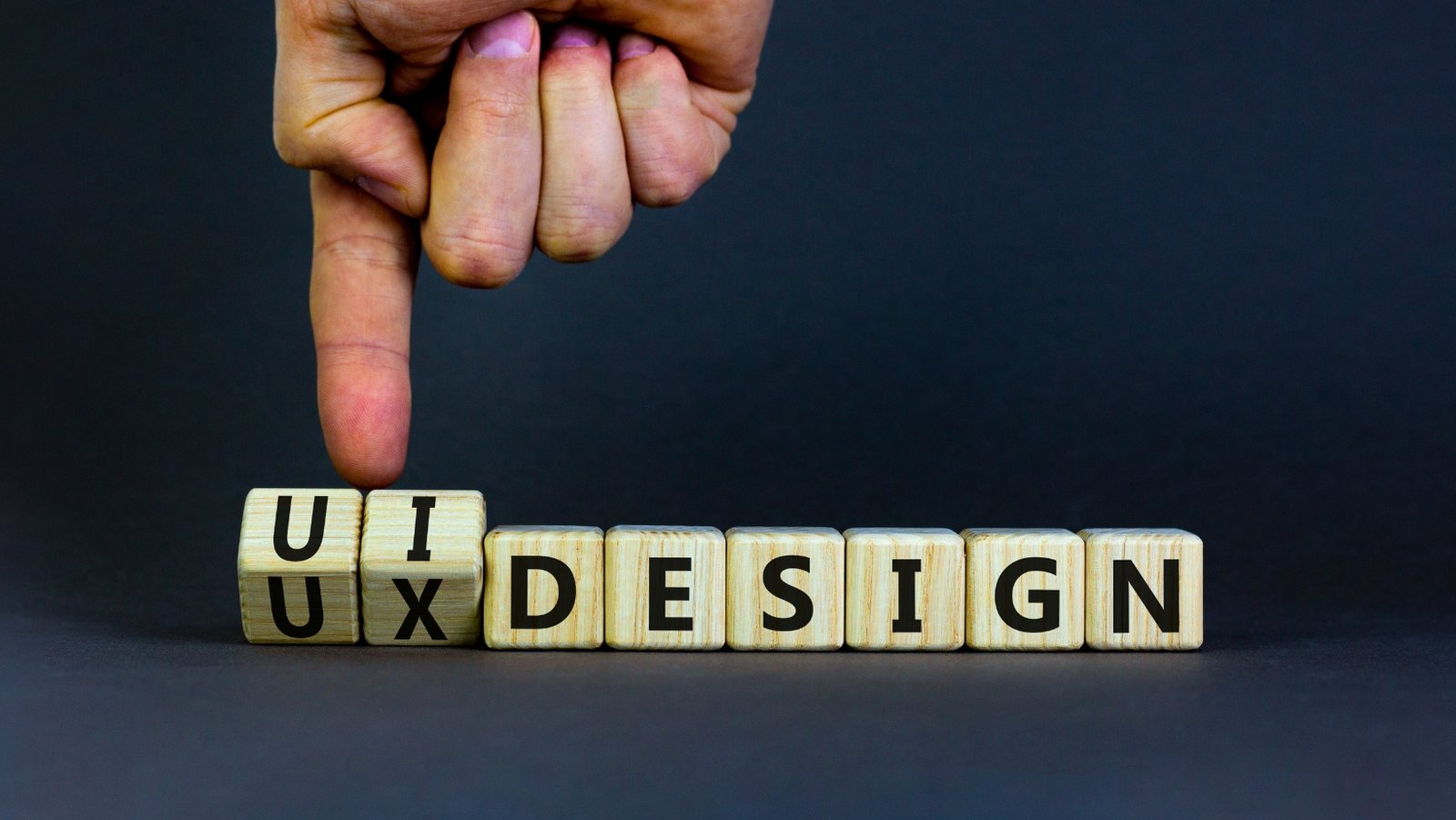In today’s digital age, user experience plays a critical role in determining the success of any online platform, whether it’s a website, mobile app, or e-commerce store. With increasing competition for attention, businesses must prioritize user interface (UI) and user experience (UX) design to keep users engaged and satisfied. Effective UI/UX design isn’t just about aesthetics—it’s about creating a seamless, intuitive, and enjoyable experience that resonates with users and keeps them coming back.
This article explores how effective UI/UX design can significantly improve user engagement, boost conversion rates, and ultimately contribute to the success of your business.
What is Effective UI/UX Design?
Before diving into the benefits, it’s essential to understand what we mean by effective UI/UX design.
- UI Design refers to the visual elements of a digital product, such as buttons, typography, color schemes, and layout. It’s about ensuring that the interface looks appealing and is easy to interact with.
- UX Design goes deeper into how users experience and interact with a product. It focuses on creating intuitive, efficient, and satisfying user journeys, from the moment they land on a site to completing a desired action (such as making a purchase).
Effective UI/UX design combines both these elements to deliver a product that not only looks good but also works well in providing an enjoyable and functional experience for the user.
Why is Effective UI/UX Design Important?
User engagement refers to how much time and effort users invest in interacting with a digital product. High engagement often leads to better user retention, increased conversions, and greater overall satisfaction. Effective UI/UX design directly impacts these key performance indicators (KPIs) by ensuring that users can easily and enjoyably navigate through a platform without frustration.
Here’s why effective UI/UX design is essential:
1. First Impressions Matter
The moment a user visits your website or opens your app, they start forming opinions. In fact, research shows that it only takes about 50 milliseconds (0.05 seconds) for users to form a judgment about a website’s design. An unappealing or cluttered interface will drive users away almost instantly. On the other hand, a well-designed, visually appealing UI creates a positive first impression, which can make users more likely to explore further.
2. Reduces Bounce Rates
Bounce rate refers to the percentage of visitors who leave your site after viewing only one page. A high bounce rate is often a sign that users are not finding what they are looking for or are having a poor experience. Effective UI/UX design addresses this issue by ensuring that the user’s journey is smooth and the content is easily accessible, encouraging them to stay longer and explore more of the platform.
3. Improves Usability
Usability is a key component of effective UI/UX design. No matter how good a product looks, if users find it difficult to navigate or perform tasks, they’ll quickly become frustrated and leave. A well-thought-out UX focuses on minimizing the number of steps needed to complete a task, providing clear and intuitive navigation, and ensuring that users can easily find the information or features they’re looking for.
4. Boosts Conversions
A successful user experience directly correlates with higher conversion rates. Whether the goal is to have users sign up for a newsletter, make a purchase, or fill out a contact form, effective UI/UX design helps streamline the process, making it easier and more enjoyable for users to take the desired action. Clear calls-to-action (CTAs), simplified forms, and a seamless checkout process are just a few examples of how good UX can drive conversions.
How Effective UI/UX Design Boosts User Engagement
When users find a digital product easy to use, engaging, and visually pleasing, they’re more likely to spend time on it. Here’s how effective UI/UX design can actively enhance user engagement:
1. Streamlined User Journeys
One of the primary goals of UX design is to simplify and optimize user journeys. Whether it’s navigating through a blog, shopping for products, or signing up for a service, the process should be as smooth and intuitive as possible. Effective UI/UX design ensures that users don’t have to think too much about what to do next; the navigation should guide them naturally from one step to the next.
2. Engaging Visuals
A well-crafted UI design can captivate users’ attention and make their experience enjoyable. High-quality images, appealing color schemes, and smart use of whitespace create a visually stimulating environment that encourages users to explore further. Visual hierarchy, where important elements like CTAs or key information are placed prominently, can guide users to take specific actions.
3. Consistency Across Platforms
Users expect consistency. Whether they access your website from a desktop, tablet, or mobile device, the experience should be cohesive. Effective UI/UX design ensures that the visual elements and overall user journey are consistent across all platforms, so users feel comfortable navigating no matter what device they’re on. Consistency fosters trust and helps users become familiar with your platform faster.
4. Interactive Elements
Interactive design elements, such as animations, hover effects, and micro-interactions, can boost user engagement significantly. These subtle features add a layer of interactivity that makes using the product more enjoyable. For example, buttons that change color when hovered over, or animations that confirm a successful action, provide users with feedback and keep them engaged with the interface.
5. Speed and Performance
No one likes waiting, especially online. Slow load times can frustrate users and lead to higher bounce rates. Effective UI/UX design prioritizes optimizing performance, ensuring that websites or apps load quickly and run smoothly. Users are more likely to engage with a platform that is responsive and doesn’t lag, leading to better retention rates.

UI/UX Design Principles That Enhance Engagement
Certain design principles are essential for crafting a UI/UX that truly resonates with users. By focusing on these key principles, businesses can create more engaging digital experiences.
1. User-Centered Design
User-centered design (UCD) is a design approach that focuses on the needs and preferences of the end-user. It requires a deep understanding of the target audience, including their goals, behaviors, and pain points. By conducting user research, such as interviews or usability tests, designers can create experiences that cater specifically to users, thereby improving engagement.
2. Simplicity and Clarity
Cluttered or confusing interfaces overwhelm users and lead to disengagement. Effective UI/UX design prioritizes simplicity and clarity, ensuring that each element on the screen has a purpose. By eliminating unnecessary distractions and focusing on core functions, users can complete tasks without confusion or frustration.
3. Accessibility
An important aspect of effective UI/UX design is ensuring that the product is accessible to all users, including those with disabilities. By following accessibility guidelines, such as providing alt text for images, using readable fonts, and offering keyboard navigation, businesses can ensure that their platforms are usable by a broader audience, thus increasing engagement.
4. Feedback Mechanisms
Effective UX includes clear feedback mechanisms that help users understand whether their actions were successful or if there was an error. Feedback can come in the form of a notification, a change in button color, or even a success message after submitting a form. This reassurance keeps users informed and engaged.
Measuring the Impact of Effective UI/UX Design on Engagement
After implementing effective UI/UX design strategies, it’s essential to measure their impact on user engagement. Here are a few key metrics that can help you gauge the success of your design efforts:
1. Time on Page/Session Duration
This metric shows how much time users are spending on your website or app. Longer session durations usually indicate that users are engaged and finding the content valuable.
2. Conversion Rates
Whether it’s making a purchase, signing up for a newsletter, or downloading an app, conversion rates are a clear indicator of how well your UI/UX design is driving users toward taking action.
3. Bounce Rate
A lower bounce rate is a sign that users are finding your platform engaging and are motivated to explore more pages or features.
4. User Feedback and Surveys
Gathering direct feedback from users can provide valuable insights into their experience. Surveys, feedback forms, and user interviews help you understand what users like or dislike about the interface.
Conclusion
In today’s competitive digital landscape, effective UI/UX design is no longer a luxury but a necessity. It directly influences user engagement, retention, and conversion rates. By focusing on delivering intuitive, visually appealing, and user-friendly designs, businesses can create more meaningful and lasting connections with their users.
Investing in effective UI/UX design not only improves engagement but also contributes to long-term business success. As users become more satisfied with their experience, they’re more likely to return, recommend your platform, and become loyal customers.


